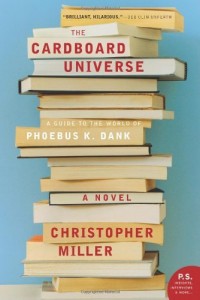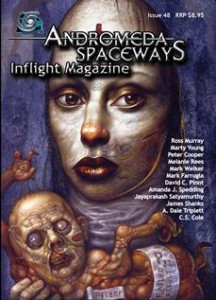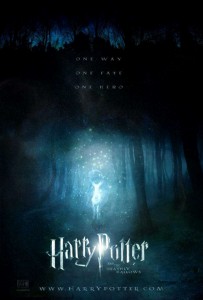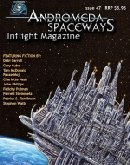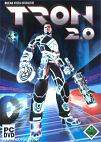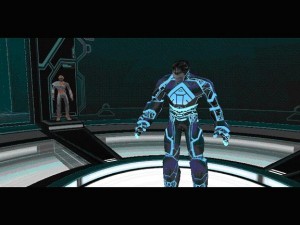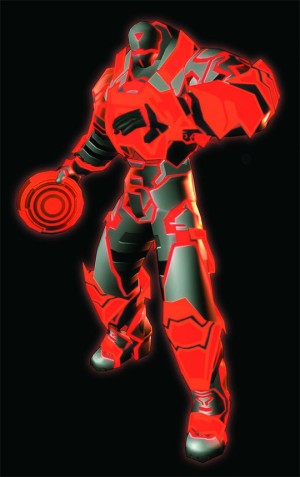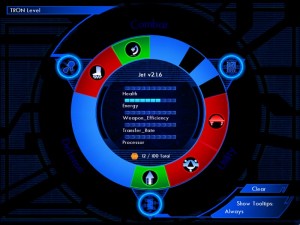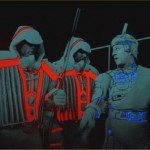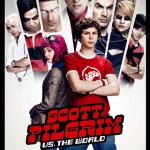Sha’Daa: Tales of the Apocalypse edited by Michael Hanson
review written by Frank Dutkiewicz
(The following review first appeared 2008 in Atomjack magazine.)
I love reading anthologies and I tend to gravitate to them, but finding one that will pique my interest enough to take a chance on it can be chancy. So when one of my favorite authors, Mike Resnick, wrote the forward to Sha’Daa: Tales of the Apocalypse, it was enough for me to want to dive in.
Sha’Daa: Tales of the Apocalypse is the brainchild of Michael Hanson. He enlisted the help of ten other authors to bring his idea to life. The Sha’Daa is a forty-eight hour window in which the barriers between our world and the Hell dimensions become thin. The event happens once in ten thousand years. Old myths and superstitious have made a few wary of the hidden portal openings spread over our world. One mysterious man, Johnny the Salesman, is the only one aware of the oncoming doom. Eleven authors have written stories on a few of the collapsing portals and of the lone man selling salvation to an unsuspecting human race.
“The Dive” by Edward McKeown
Kevin Hanlon is the District Supervisor in charge of a group of misfit subway workers. He is sent into the New York subway to investigate a strange opening in one of the tunnels where he discovers the demons that are about to invade our world. All the demons need is a bit of human blood and a few souls for the gates of Hcell to be opened. Hanlon must convince his rainbow-coalition band of misfits to help him save the day.
If Hollywood is searching for their next action-packed cheesy-horror film, they need to look no further than The Dive. Like a cheesy film, it opens with Hanlon introducing his nine misfit workers, each equipped with their own colorful nickname. It doesn’t take long for Hanlon’s skeptical team to realize his tale of marauding demons isn’t crazy. They are the only ones standing in the way of an army of alligator and aped-faced monsters and an unsuspecting New York City. What happens next would fit any Predator/Alien sequel — pitched battles, rescuing of a damsel in distress, with a clichÃ�’ �d line or two thrown in for comedic effect†(“Can’t we all just get along?”)
If you are familiar with this standard storyline you can probably figure out what will happen. The only mystery is guessing who will bite the bullet before it ends. The Salesman’s character was done well but he reminded me of Kazoo (alien from the Flintstones), just not as corny or silly.
Despite my complaints, “The Dive” is an entertaining read. For an opening story to an anthology like this, it does fit. The action is nicely written and the pacing is quick.
“Tunguska Outpact“ by Deborah Koren
Kate is a young woman dragged into the Siberian wilderness by her boyfriend. Saul is heading a University expedition to investigate the 1908 Tunguska event. Kate becomes furious with Saul when he completes a trade she refused earlier with the Salesman – a watch for her stuffed-bear. Kate’s bubbling anger for her boyfriend, and for the world at large, is just what is needed to bring about the Sha’Daa.
“Tunguska Outpact” is a hell of a story. Ms. Koren took a simple tale of a girl with issues and made it into something more. There are only few a characters in this piece but the story is really about Kate anyway. The supporting casts serve as excellent foils for her character. Solidly done from her point of view, you get a vivid idea on what she thinks of others with a few well-placed words, a rare gift Ms. Koren uses efficiently. The crux of the story is the conflict with her soon-to-be-ex-boyfriend, Saul. She defines their relationship with little quips, such as this take on Saul’s presents, describing them as,(not) gifts at all, but little collar-and-leash sets”.
Within the story are short flashbacks dating back to when she first received her bear. Generally, a bad idea but Ms. Koren uses them appropriately and exploits them to move the story along. You get a solid idea on why Kate became the resentful girl that she has become.
The climactic scene almost comes off as anti-climactic. It looked as if it would turn into something outlandish but Ms. Koren wisely reeled it in before it got out of hand. The ending fell a little flat but the end couldn’t have possibly made this story grander anyway.
“Tunguska Outpact” is probably not going to win any awards but the storyteller I am suspecting will someday. I found Deborah Koren’s style and story-telling ability outstanding. I will be looking forward to more of her works in the future.
“Lava Lovers” by Wilson “Pete” Marsh
Doctors Toby and Sarah Nightwalkers are geologists enjoying a working vacation in the Mediterranean. They hire an old salt of a sailor named Agenor to take them to the Santorini Caldera, site of a series of volcanic eruptions dating back to 1600 BC. The two young doctors have a shared passion for old myths and legends, which is the reason why they sought Agenor services.
Against Agenor’s better judgment, the couple camp out on Akroteri, site of the ancient city that was buried in the 1600 BC eruption. On the slab of rock they camp on, the pair discover handprints – left hand human, right a three-fingered claw , that is identical to one they saw in the Petroglyphs of New Mexico. The prints remind Toby of an old myth his grandfather used to tell. Under his bride’s prodding, he recites the words to bring forth the Sha’Daa.
“Lava Lovers” starts out as nothing more than a married couple having a semi-interesting conversation. When Agenor comes on the scene (a couple of pages in) the story begins to get entertaining. At one point, a good page is set aside for a geological lecture. Interesting if you’re watching the Discovery Channel. Not so much if you’re reading an anthology about the coming apocalypse.
Half way through the piece switches into high gear. The action is solid and the tension first-class. Mr. Marsh does an excellent job of bringing his characters to life. They are likeable and funny. The humor is slight but his timing is perfect. The Salesman makes a brief appearance and Marsh seems to have an excellent grasp of his character. For such a short role he has a major impact in the plot.
“Lava Lovers” is a bit slow off the starting line but recovers and finishes strong. I liked this story a lot.
“The Way of the Warrior” by Arthur Sanchez
Shinzo is a monk in the Temple of Eternal Light, and like the rest of the monks, seeks to become a warrior. As a monk, most of his battles are against grime and his weapon is a mop. In his spare time, Shinzo is the warrior he seeks to be in the world of video games.
The monks are the first defense against the demons that seek to destroy Earth. They train for the day of the challenge. Two grand champions, one demon, the other a member of the monastery, will battle for the fate of Earth on the chosen day. The time is unknown, but it is decided when all the blossoms on the cherry trees in the monastery’s garden have fallen.
On this day, the rest of the monks are away leaving only the Grand Master to watch the cherry trees and Shinzo to polish the floors. The Salesman appears with a mop and cleaner that magically cleans the floor for Shinzo, for a price to good to pass up. The cleaner works wonders, a little too well when an unsuspecting Master slips on the slippery floor, leaving Shinzo alone — just as the blossoms begin to fall.
“The Way of the Warrior” is a jewel of a story. It is quite simply, hilarious. The demon champion left me in stitches. This Salesman is the craftiest in the anthology. Shinzo is the least likely champion fate could provide. Shinzo uses his wits, and love of the video game, to combat an impossibly formidable opponent.
As someone that attempts to make others laugh, my hat goes off to Mr. Sanchez. Bravo.
“Breaking Even” by Jamie Schmidt
Kenneth is a gambler with a psychic gift that gives him an edge. Banned from most of the casinos in the universe, he returns to Las Vegas to see if he can weasel his way back into some action. The glitzy Nevada city is filled with demons who are quite aware of Kenneth’s gift. He is escorted to the airport where he runs into the Salesman. Johnny offers Kenneth a stake in the biggest game in the universe.
Imagine Maverick with aliens and demons. Throw in a daughter Kenneth never knew he had and you got the basic story line of “Breaking Even”. The story has plenty of one-liners, almost all of them corny. “I love Mexican”, is one a demon drops after devouring a Chihuahua.
I found Kenneth unlikable, the villain predictable, and the cast of characters unremarkable. I think the story would have been better served without the sitcom-level humor. I did find the ending delightfully poetic. Nevertheless, Breaking Even came off as unexceptional.
“Dixie Chrononauts” by D. R. MacMaster
Harvey Cormac is a US Marine, home from Iraq. He chooses to spend his off time in a Confederate Civil War re-enactment company headed to Gettysburg. While traveling on a back-road/shortcut in a bus with the company, which is followed by a professor eager to stop madman from starting the Sha’Daa, and a Homeland Security agent transporting a van load of weapons (alone) for the Maryland State Police, they are transported back in time days before the 1863 battle. Harvey Wraith, (the villain) has gone back into time as well. The deaths of the battlefield and a suspicious virgin pregnancy are the two pieces needed to bring about the Sha’Daa. Harvey and his fellow stranded time travelers are the only ones that can stop him.
“Dixie Chrononauts” started off fast and showed promise but slowed to a crawl a page or two in and dragged from that point on. The first ten pages or so are used to introduce the seven main characters and set up the unlikely scenario that places them all together on a lonely dirt road. The next ten after that are for the characters to get their bearings and figure out what the reader all ready knows. The remainder of the story becomes a desperate battle between conveniently well-armed heroes and giant snakes, spiders, and other creepy crawlers.
“Dixie Chrononauts” reads like a knock-off idea based on so many 1950 horror movies I watched as a kid. The heroes come off as stereotypical and the villain is just plain silly. All Harvey Wraith needed was a curled handlebar mustache to complete the picture. The story is littered with characters and the shifting perspectives made it difficult to follow.
The last line in “Dixie Chrononauts” sums up the piece perfectly for me.
“It’s a long story,”
“The Great Nyuk-Nyuk” by Adrienne Ray
Brian Mulcahey is a smart-alec sixth-grade student of St. Bernadette’s Middle School. His tormenting of Sister Farzenweiner and the rest of the staff has earned him the attention of the Vatican. They are convinced he is the savior that will make the King of Atrocities laugh, thus saving the world.
The premise to this one is silly. Fortunately, it’s supposed to be. The story is more about a Jesuit priest having doubts about his faith than about a jokester being put on the biggest spot ever. I found Brian likeable but unremarkable. Truthfully, I knew cleverer smart-alecs growing up.
“The Great Nyuk-Nyuk” is funny but is not in the league of the earlier comedic piece, “The Way of the Warrior.“ I didn’t find it as clever or as smooth. It was nevertheless a fun story.
“Talking Heads” by Nancy Jackson
Professor ‘Ronny’ Johns hand picks a group of students to help her investigate a rash of strange occurrences on Easter Island. Ronny worries that her grandfather’s old stories of the coming Sha’Daa are true. With the help of a gifted blind student, she hopes to uncover the mystery of the Monoliths.
“Talking Heads” follows an all too familiar blueprint. Set a group of people at the right place in the last possible moment to foil a carefully laid 10,000 year-old evil plan. Professor Ronny drags what she hopes will be the saviors of the world with her, but withholds crucial information on why they’re there so they won’t panic. Her students fit the clichÃ�’ �d plot perfectly. There are two hunky boys competing for the same girl and a blind girl (why are they always blind?) gifted with a psychic-like vision. Add a student that doesn’t believe anything, another who believes all is lost, and one more that wants to cut and run, and you have your world saving bunch.
I did like the impending doom implications — plants swallowing islanders and turning them into zombies while the gods wreck havoc one island at a time, does sound cool. The Salesman in this tale plays a prominent role but I found him to be stiff compared to how he was protrayed in other stories. To loosen things up, Ms. Jackson does try her hand at a funny line or two.
“â€I handpicked each of you because you were smart and talented. Martin, I think I invited you for comic relief.”
Despite my complaints, “Talking Heads” isn’t a bad story. The plot is sound but slow developing. Not close to my favorite but still worthy of the anthology.
“The Seventh Continent” by Lee Ann Kuruganti
The scientist, researchers, and workers living at McMurdo Base in Antarctica are celebrating their mid-winter greetings celebration when a nearby volcano erupts, releasing green-bubble monsters sent by the Sha’Daa dark lords. The bubbles are deadly and can’t be stopped. Or can they?
The first eight pages of “The Seventh Continent” is nothing but inane conversations between twenty-something Real-World (show, not life) wannabes. I began to wonder if all the western governments decided to populate Antarctica with nothing but skateboarders and rappers (plan does have merit). Once you got through the chatter, the story got better. But just like the Real-World the characters come off as selfish. I couldn’t find one thing to like about any of them. What I did like were the monsters. For green bubbles they were pretty slick, no two humans died the same way inside their transparent skins. Even for the Antarctic they were cool.
So I did find something to root for in Ms Kuruganti’s story. Unfortunately, it was for the wrong side.
“Prana” by Michael Hanson
Prana is the second most powerful being in creation. The coming Sha’ Daa draws it to a small world filled with insignificant creatures called humans. Prana feeds off the energy of the invading demons. To maximize his absorbing potential, Prana divides into 1000 sub-Prana. The plan is to reassemble after the end of the Sha’ Daa, more powerful than before. But the longer the sub-Prana’s remain apart, the more they resist the call to return as one. And one, Prana-777, has taken a keen interest in humans.
“Prana” is more of a loose bunch of small stories within a larger one. Once divided, many of Prana’s smaller parts begin to develop their own sense of identity. The longer apart, the more advanced their individuality becomes. There is a thin moral here, being part of something greater than yourself is not always great. This story comes off much like how Mr. Hanson’s interludes do, excellent tales in small doses, but as one connected piece, “Prana” felt disjointed. Part of the reason is the ending fizzled and I wanted something more.
“The Salesman” by Rob Adams
Johnny has masqueraded as a human for ten millennia. His sentence for interfering in the Sha’Daa has come full circle. The new Sha’Daa approaches and he is doing all he can so the brave, unsuspecting people of Earth will have a chance. The golden-tooth salesman then comes across a new player to the game. Prana is here to make sure Johnny doesn’t interfere with the Sha’Daa, something Johnny has been destined to do.
Rob Adams was given the task to tie all the separate stories together. He does that and provides a background for dear old Johnny. We learn who and what Johnny is and why he has lived on Earth for so long. A good portion of the tale shows what happened to him before he became the Salesman.
“The Salesman” is a nice bow for a smartly wrapped present. Mr. Adams did very well taking a single character based of several different authors ideas of what he was. This Johnny wasn’t quite the crafty, sharp-witted door-to-door salesman Arthur Sanchez created, or the wise angel-like being in “The Dive,” but he was a very rich character. I found this story as a fitting finale for this anthology. Mr. Hanson chose well picking his anchorman for his project.
Prologue, interludes, and epilogue by Michael Hanson
These are the little intermissions set between each chapter. Two things made them different from the rest of the stories. A) They’re short and B) They don’t involve Johnny the Salesman.
The prologue and epilogue are the snug fitting bookends that they should be. The interludes are complete standouts, and not the bridges between chapters I thought they were at first. The longest is nine-pages. Most fall into a one to two page length. I found the majority of them to be sharp and a few of them outstanding. Some of the less-than-a-thousand word stories had richer plots than a couple of the ten thousand word plus chapters.
I particularly liked “Jump”, “Invasion Force”, and “The Friendly Skies.” My favorite was “Brave Man”. I found most of the interludes delightful.
Final Analysis
It can’t be easy to grasp someone else’s idea, especially when you have a narrowly defined character to work with, and write a story that fits what the creator envisioned. Mr. Hanson’s brainchild was no ordinary guideline to follow. What he asked for was the equivalent of JRR Tolken approaching a group of writers to help him create Lord of the Rings to his specifications and satisfaction. The concept of the Sha’Daa and Johnny the Salesman are exciting ones. Finding eleven writers to help fill up a novel based on Mr. Hanson’s idea couldn’t have been easy.
As a reader of many anthologies, I have yet to find one where I liked every story when they are written by so many different authors. Sha’Daa does not break that streak. More than a few of the plots felt forced to me and the quality of writing was not consistent, but almost all the stories were satisfactory. I did find more than a few to be outstanding.
“Tunguska Outpact” and “Lava Lovers” were exceptional. Couple those with Michael Hanson’s many interludes and the fitting final act, “The Salesman,” and you have a great book. I found their stories to be well worth the price of admission. However, I liked Arthur Sanchez’s “The Way of the Warrior” so much I would recommend the Sha’Daa based on his story alone.
So, if like reading about the end of the world, the Sha’Daa: Tales of the Apocalypse is the book for you. I recommend you buy yourself a copy. You won’t be disappointed.
 Frank hasn’t made many friends since he started doing reviews so heÂwent andÂfound a newÂchum.ÂBob is his new best bud but word is they had a recent falling out. Frank was overheard callingÂBob a ‘Windbag’ while mutual friends claim Bob refers to Frank as a ‘Blowhard’ behind his back.
Frank hasn’t made many friends since he started doing reviews so heÂwent andÂfound a newÂchum.ÂBob is his new best bud but word is they had a recent falling out. Frank was overheard callingÂBob a ‘Windbag’ while mutual friends claim Bob refers to Frank as a ‘Blowhard’ behind his back.


